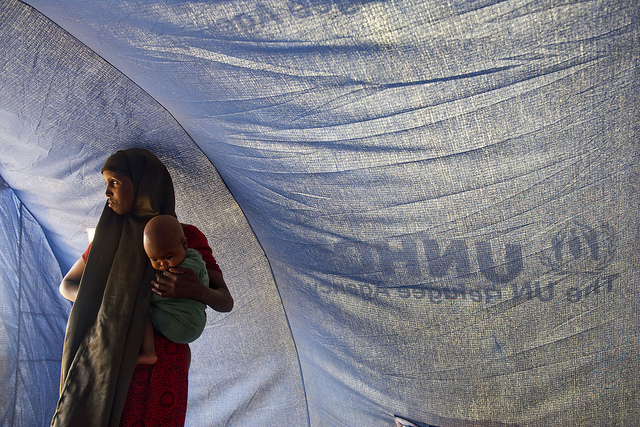UNHCR released its Global Trends report this week to coincide with World Refugee Day, detailing the latest statistics on forced displacement across the world. According to the report, over 68.5 million people are currently displaced from their homes for reasons of conflict, violence and other forms of persecution. This figure represents a record high for the fifth consecutive year.
In 2017 alone, over 16.2 million people were forcibly displaced, a figure which translates to 44,500 people a day, or one person every two seconds. Over two thirds of the world’s refugees originate from just five countries: Syria, Afghanistan, South Sudan, Myanmar and Somalia.
The report found that over half of those displaced are children, many of whom are unaccompanied or separated from their parents. In 2017 173,800 children sought asylum on their own, although UNHCR states that this figure is likely an underestimation.
The report dispels a number of common misconceptions about forced displacement, such as the belief that most of those displaced are hosted in countries in the Global North. UNHCR affirms that in fact the opposite is true, stating that “approximately 85 per cent of all refugees at the end of 2017 were granted protection in countries in developing regions, which included nine of the 10 largest refugee-hosting countries”. Turkey hosts the largest number of refugees, now reaching 3.5 million, while Lebanon hosts the greatest number in proportion to its own population.
Another misconception the report addresses is the number of cross-border displacements. Almost two thirds of those forced to flee are internally displaced within their own borders. In addition, most of those who do cross a national border settle as close as possible to their home.
The EU also launched its Annual Report from EASO, the European Asylum Support Office, providing an overview of asylum related policies and practices, both at EU and at national level. In 2017, more than 728,000 applications for international protection were lodged in EU countries, with 33% of decisions granting asylum seekers either refugee status or subsidiary protection.
Speaking at a press conference on the launch of the Global Trends report, Director of UNHCR New York Office Ninette Kelley said, “Where do we go with all of this? We see humanitarian budgets that aren’t nearly enough to meet global need, we see ongoing conflicts and rising displacement. We are left to cope with a situation of forcibly displaced persons, most of them living in communities who are also very badly off. We need a new means to go about addressing this.”
UN High Commissioner for Refugees Filippo Grandi commented, “We are at a watershed, where success in managing forced displacement globally requires a new and far more comprehensive approach so that countries and communities aren’t left dealing with this alone.”
Photo: (CC) United Nations Photo, August 2011
This article appeared in the ECRE Weekly Bulletin . You can subscribe to the Weekly Bulletin here.

